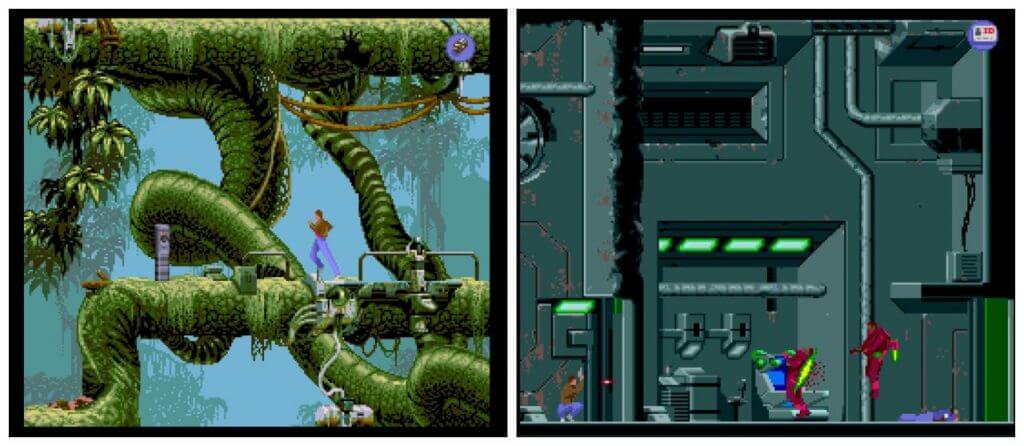Nevertheless, you took Eric’s legacy under your wings. You came up with a game which utilized even smoother rotoscoping; perhaps one of the most impressive animations to be applied to any platformer, even today. Flashback (1992) became the most successful French game at the time and even got a Guinness World Record for that achievement. I am eager to hear about Flashback’s development and also your original ambitions for the game. I mean, did you even expect it to be this successful?
In fact, we were not planning to create this kind of game. It started as a very strange project. We were approached by a company called U.S. Gold with which we had previously worked on Cruise for Corpse. They wanted us to create a game based on a license for the Godfather film. It was supposed to be a game for the new Sega Mega Drive console. It was a great opportunity to work on consoles; it was the first time for us. So we had to think about how to design games for the game pad instead of the mouse, and a cartridge instead of a disk.
Because it was just pixels; you can’t draw everything, but you can tell a story as deep as movie through the gameplay, which was very strong
I decided to use more of an action approach than the previous adventure games, as it was obviously not possible to do a point-and-click game on the console. I am also a big fan of the sci-fi movies of the ’80s and ’90s: Blade Runner and movies with Arnold Schwarzenegger [laughs]. So I proposed shifting the story more into the future and having Michael Corleone and all this mafia stuff taking place there. And they said, ‘Okay, that might be interesting, try it.’
So we started to work on prototypes of the game that would become Flashback. We experimented with rotoscoping and the production stuff that would be used to create the game. Then we created a demo from a vertical slice of what would be the first level of the game and showed it to U.S. Gold. They quickly realized that it was very, very far from the artistic style of the license. So they told us to continue, but without the license and to create our own original game. That was quite surprising, but it was also very exciting to have creative freedom and not have to follow the rules of the film.
At that point, I started reworking the whole story. We changed the game and recreated all the levels, and that is how it became Flashback.
Funnily enough, back then, when I played it on Amiga, people often mistook Flashback for a direct sequel to Another World; only more action packed and cinematic than its supposed predecessor. I too had this impression. I was always trying to find out the nexus of those two stories [laughs].
Yeah, we had just started a period of movie-like stories and wanted to keep that spirit in the game. That’s why it’s so story-driven and why there are so many cinematic cutscenes there. The great thing about that time was, as a creator, I felt I could do anything. Because it was just pixels; you can’t draw everything, but you can tell a story as deep as movie through the gameplay, which was very strong. So, it was nice experiment in the end.

Yes, I must agree. You managed to create a timeless classic that still feels fresh after all those years. It is a thrilling, well-presented and great-looking action adventure game. A mixture of all the right sci-fi tropes is delivered with amazing playability. I wouldn’t be far off by saying that Flashback is perhaps my favorite platformer of all time.
Yeah, thank you!